Modern History of the Neapolitan Mastiff by Maria Bryan

Most people are at least vaguely aware of the ancient history of all Mastiffs. You will find many books on the subject, though how correct the information is, one often wonders, as there are frequently long gaps in the history or lineage of most breeds. Neapolitan Mastiffs are no exception. When you see things like; 'It is thought' or 'It is believed' or 'Most likely', you can be sure that in reality; It is not known.
What one author writes, many others will simply copy without a clue as to the facts. I have seen articles referring to Neos as 'Teddy Bears' or 'Gentle giants'. True a well reared dog is gentle toward his family and often even their guests. Regardless of this, he should NEVER be taken lightly, for that 'Teddy Bear' will turn in a second into a raging beast if his family or home is threatened.
It is CERTAIN that the Neapolitan Mastiff does belong to the family of dogs known of Old as the Molosser, and that these were dogs of war. It also stands as common sense that those dogs of Old were far fitter and tougher dogs than the romantic re-creation which is the Neapolitan of today.
We know roughly what those dogs of war looked like from artefacts, and paintings. These suggest that the larger of these dogs were left at home to guard, while the more active dogs were used to hunt or bring down large game, as well as march into battle.
We know that by the 1940's there were still a few dogs who bore more than a passing resemblance to the old Molosser as he used to be depicted. There were at that time no written records of lineage, nor were the dogs openly traded. They were bred and kept by both wealthy Italian landowners and poor farmers alike.
It was not until Piero Scanziani, a writer and journalist discovered them and brought them to the attention of the outside world, along with other fanciers of the breed, that the forerunners of the dogs we see today were promoted and records of lineage kept.
The dogs who were to be used in the reconstruction of this breed were gathered mainly from farms and estates around Naples.
Mario Queci was without doubt one of the most prolific and well known breeders from the early 1950s until he died in 1990. His kennel name, Di Ponzano, is in the pedigrees of most of the dogs we now have.

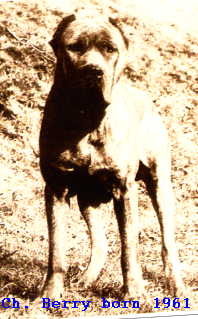
Two Old Style Neos above
In this last 50 odd years the appearance of the Neapolitan Mastiff has been changed considerably from the large but still functional animals the Italians had kept to themselves for so long. He has been taken to the extremes we see today, through becoming 'fashionable' his health has suffered considerably, for the traits that have been bred for mean that he often suffers from low thyroid function. This gives the huge bones, thickened skin which give the masses of wrinkle, and often shorted leg bones which is a form of dwarfism. He has been likened to people and other animals which suffer from Ehlos-Danlos Syndrome. These recessive traits which have been bred in often lead to health problems such as low immune system, low energy, sparse hair growth, skin conditions, bone deformities, cartilage and ligament problems, and bad hearts.
If this trend for breeding overblown dogs which can barely trot around the show ring, let alone follow his master to war as the Molosser of old often did, continues, I fear the breed will soon be bred into extinction.
Photos show us just how much the appearance has been changed in less than 50 years of breeding by those more concerned with fashion than with preserving this ancient dog for his marvellous temperament, guarding abilities, and character, which is like that of no other dog.
For the Neapolitan Mastiff to march forward into the future as fearlessly as he once marched off to war, his health problems must be addressed. The usual tests and x rays for hips etc. mean little in selecting for health in this breed. Although he does have loose joints, these seldom bother him. It would be more appropriate to test for Ehlos-Danlos syndrome, or at least to select the less typy dogs for breeding and stop the push for ever larger and more grotesque looking dogs.
This will mean getting back to the type of dog he was before the followers of fashion took him and made him an unfit icon to what they see as a romantic resurrection of the Old Molosser; albeit minus that ancient dogs abilities.
It is not too late. Nature has a marvelous way of fighting back. If given the opportunity these dogs can continue as the mighty guards and companions that those old Italians so wisely kept from the outside world for so long.
We need to start selecting for dogs which are still functional in size, and for the less typy dogs with some, but not excessive wrinkle. Dogs which have legs of appropriate length for their bulk. In doing this we will also automatically be selecting for the dogs less likely to have the symptoms of Ehlos- Danlos Syndrome. Such dogs will then have far better health, yet keep their instincts for guarding their home and owner intact, as they have done for centuries. Unlike many of the Mastiff types, the Neo remains as good a guard as ever he was. His courage and loyalty to his family unswerving.

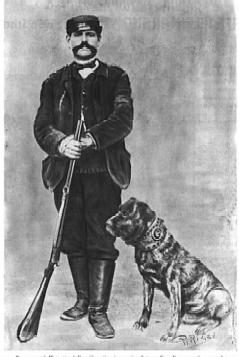
Two fine examples of Neapolitan Mastiffs, prior to the dogs being selected for too many recessive genes which have led to many of the problems some lines have today.

Toto 1951

Don't know the history of this dog, but of working Neo type... This dog could have followed his master off to war! Far thinner than one would have for the household, but in fine working condition. Those muscles have come from exercise, not just starvation.

This is the famous Leone, a fine old type. We have a grandson of this dog at stud now. Neomostro Bambino.
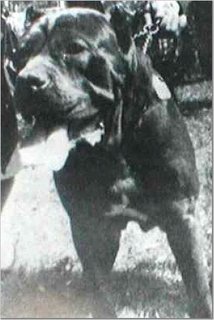

Two fine dogs, on top from 1960's, on bottom from late 1970's. If you fancy the Neo, you should try to obtain the book by Mario Zacchi, "The Neapolitan Mastiff" first published in 1983. It is very hard to obtain now, but well worth the effort and cost if you can get a copy. Mr Zacchi mentions a few dogs getting up to 80kg. which was considered very big for a Neo back then. He says he can see no point whatsoever in breeding the Mastini any bigger than 80 kg. I believe that today's breeders have gone way too far, striving for ever larger and more typy animals at the cost of function and general health.
Abcalert, going back to the good old days!

Abcalert Fenrir has his Championship now, and is not yet a mature dog. He won Best of Breed and Best in Show at Perth 2004. His owner was told by the judge that he is the best moving Neo she has seen in years and she considered him an outstanding dog. He is not over sized or over typy. This goes to show that there is no need to be a follower of fashion to breed good dogs and yet still have dogs capable of winning in the show ring as well as having correct Neo temperament.

Abcalert Fenrir just a few points to go to get his Australian Championship.DONE, HE IS NOW AN AUSTRALIAN CHAMPION.
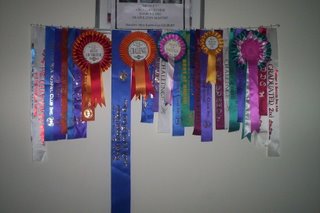
Some of Fenrir's show ribbons; which go to show that the fitter type of dog is well liked by many judges. This dog will mature into a very nice Neo.

Abcalert Murello, better known as Murphy, shown at around 7 months. I had half heartedly offered this dog for sale, but have withdrawn him from sale. He is typical of the old style of Neapolitan Mastiff which I admire and will be staying right here. Like most of our dogs, Murphy won't see the inside of the showring.
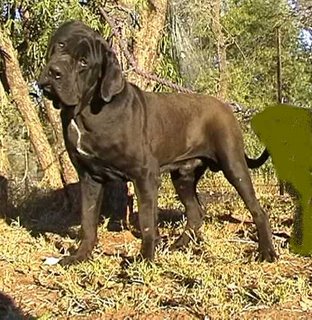
Murphy at one year old, not typy and at this age not a lot of wrinkle. Enough will return as he matures. This is usual in a good dog. They can get quite plain as they go through their 'teenage' stage. His temperament is all I could want; stable yet fearless and protective. Murphy also has a most engaging nature, he 'talks' to me and often also argues with me. Of sturdy build, yet not too large. He will mature by three into a great looking dog of what I feel is correct in a true Old type of Neapolitan Mastiff, unlike the unfortunate bitch in the photo below.

This bitch would be considered the epitome of the breed by most show breeders. Said to be a fit dog, but one would wonder, fit by what standards? She would certainly never follow an army to war, and I very much doubt she will live a long life. I do not believe that to take a breed and change it's appearance to the extent which these photos show in just over 50 years, is at all what those old Italian breeders would have approved of. They had kept these dogs safe and sound for centuries only to have a few enthusiasts inbreed the hell out of a very few individuals until this type of Neo came to be what many now see as the 'true Italian' type of Mastino.
I do not believe this to be the case, as this type of Neo can no longer function as the Molloser of Old did any more than the modern day British Bulldog can pull down and hold a bull as his forebears could. Abcalert will therefore continue to breed for what we see as the 'true' type of Neapolitan Mastiff. We are not followers of fashion, but leaders in keeping alive dogs bred with correct temperament and style as they were before a very small percentage of people decided to take the breed and turn them into what they see as an Icon, or some sort of romantic re creation of something which never did exist in the form they have given it today.
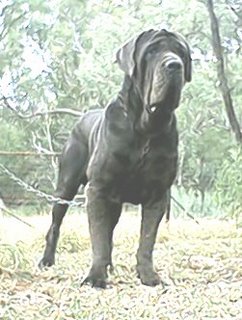
Abcalert Mario, this, I call a Neo. Fearless, protective, and fit as an athlete. He is as a draught horse is to a race horse, or a Greyhound to a Bulldog, but as Neos go, he's far more athletic than any lowslung over typy Neo can ever be.
Link to an interesting site in Germany, check out the agility page.
http://www.mastino-napoletano.de/agility.htm
Article Written by Maria Bryan of ABC Alert Trublue Bandogs
http://abcalert.com/

<< Home